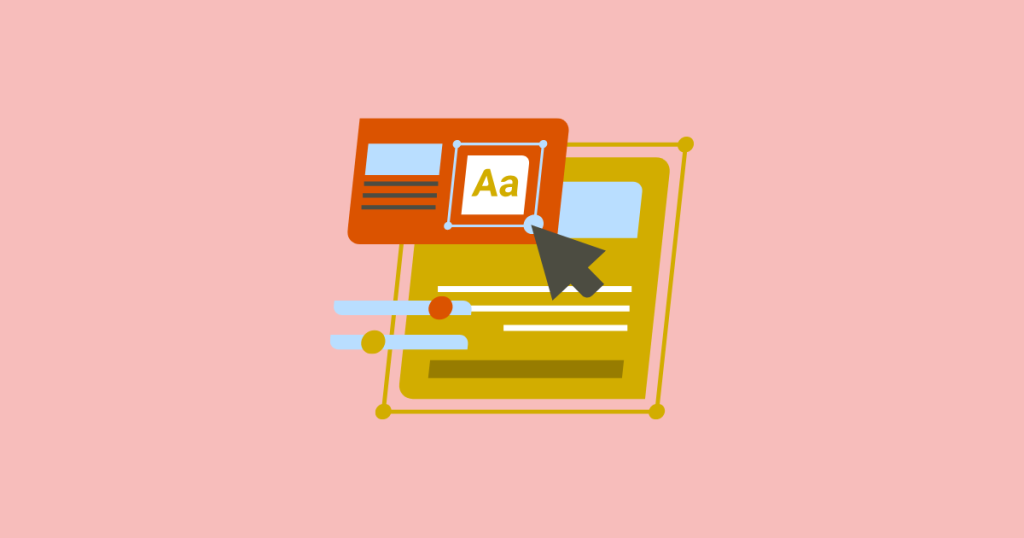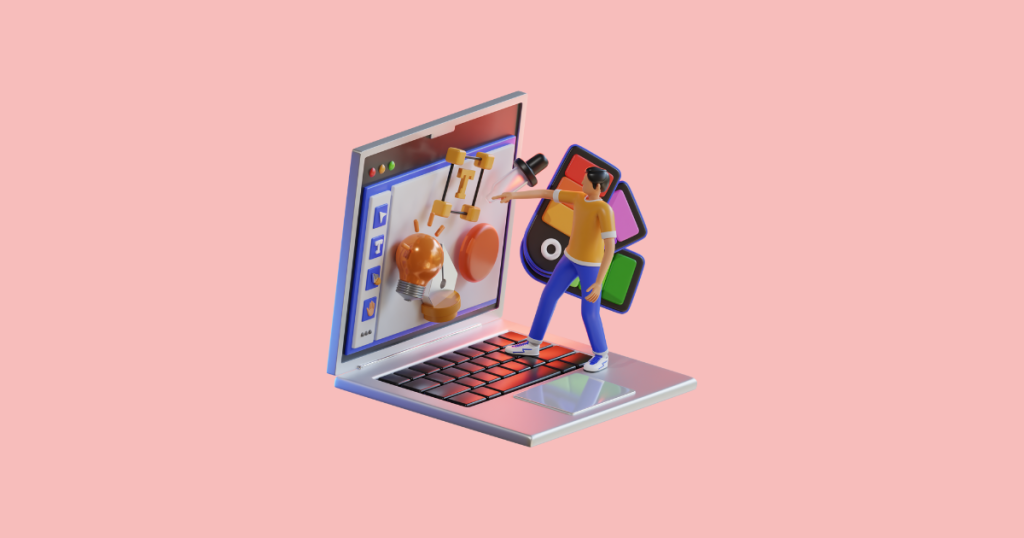When does a design sprint usually take place?
The short answer? It typically happens early, right after a problem or opportunity is identified and before heavy development begins.
It’s used to align the team, reduce risk, and quickly validate a concept in about one working week.
If you’re new to sprints, think of them as a focused, time-boxed workshop.
You can run a Design Sprint to kick off a new product, reposition an existing feature, resolve a roadmap debate, test a high-stakes idea with users, or de-risk a major investment before committing engineering time.
Below, we break down exactly when sprints fit best in the product lifecycle, the key stages, and how to plan your timing for maximum impact.
When Does a Design Sprint Usually Take Place?

A design sprint is best scheduled at moments of high uncertainty and high leverage, when decisions will be costly to reverse later.
New product initiative:
Use a sprint right after discovery reveals a promising opportunity, but before creating a full roadmap.
This clarifies target users, value proposition, and the critical path.
Major feature or pivot:
Run a sprint when you have multiple competing directions and need evidence to choose.
The sprint helps compress weeks of debate into a few decisive days.
Pre-build validation:
Place a sprint after initial concepting and before engineering commits to architecture.
Prototyping and testing now protect you from expensive rework later.
Critical milestone or stakeholder alignment:
Schedule a sprint before a quarterly planning cycle, a funding round, or a key partner demo.
You’ll emerge with a shared vision and tested assumptions.
New market or new workflow:
When entering unfamiliar territory, sprint to surface unknowns, map risks, and pressure-test the journey with users.
Common anti-patterns to avoid:
- Too early: If there’s no clear problem framing, no access to users, or no decision-maker, postpone the sprint until these essentials are in place.
- Too late: If engineers are already building and the cost of change is high, a full sprint may be too late. Consider a smaller research or usability burst instead.
- Too crowded: A Design Sprint requires focus. Avoid stacking it on top of a normal week, protect calendars, and set clear objectives to ensure success.
1. How long it lasts and why timing matters

Most design sprints run for five consecutive days with a clear arc: align, diverge, converge, build, test.
Some teams compress to four days or spread to six–ten days to fit availability and complexity, but one business week remains the standard because it creates urgency without burnout and supports a realistic prototype and user testing window.
✅Five-day format is common because it maps cleanly to one-day-per-stage pacing and produces a testable prototype by week’s end.
✅Extended formats are suitable for more complex domains, regulated environments, or when recruiting specialized users requires more time.
✅Short formats can work for teams with high sprint maturity and tightly scoped questions.
2. The key stages and what happens each day
While naming varies slightly by source, the flow is consistent: understand, ideate, decide, prototype, validate.
Here’s a plain-language breakdown you can use to plan resources and outcomes for each day.
Day 1: understand and align
- Define the long-term goal and sprint questions.
- Map the user journey and identify the target moment.
- Capture insights from experts via quick talks.
- Choose a focal challenge.
Day 2: ideate and sketch
- Explore the broad solution space individually.
- Use rapid, structured sketching to push beyond first ideas.
- Produce self-explanatory solution sketches ready for review.
Day 3: decide and storyboard
- Critique anonymously to reduce bias.
- Vote to select the strongest approach(es).
- Build a step-by-step storyboard for the prototype.
Day 4: prototype
- Create a realistic, testable facade using no-code tools and design systems.
- Assign clear maker roles and keep fidelity “just enough.”
- Prepare the test script and logistics.
Day 5: validate with users
- Run 5–7 user interviews to spot patterns.
- Capture findings as insights and decisions.
- Decide next steps: refine, pivot, or green-light.
3. The best times in your roadmap to insert a sprint

Plan sprints around moments that unlock the most downstream value.
Before discovery handoff:
Convert research into a concrete, testable concept.
Before solutioning workshops:
Replace opinion-driven debates with evidence.
Before quarterly planning:
Feed prioritization with validated learning.
Before technical scoping:
Validate desirability and usability so tech plans match real user needs.
After a strategic shift:
Align leadership and team around a new narrative and prototype.
After rising support costs/churn signals:
Use a sprint to fix a known friction point with measurable impact.
4. Who should be in the room and how to schedule them
A sprint lives or dies by having the right people present at the right times.
- Core team all week: facilitator, product owner/decider, designer, researcher, tech lead, domain SME, and someone close to data/ops.
- Expert lightning talks on Day 1: legal, compliance, marketing, sales, customer success, data science—book 15-minute slots.
- Users on Day 5: recruit in advance, confirm profiles match your target segment, and prepare incentives, NDAs, and recording permissions.
- Stakeholder reviews: 30-minute touchpoints end of Day 3 (decision), early Day 5 (test plan), and post-test readout.
Preparation checklist and timeline
| Two weeks before | |
| ☐ | Define the sprint challenge and success metrics. |
| ☐ | Secure decider availability for all five days. |
| ☐ | Book a dedicated room or digital workspace. |
| ☐ | Start user recruitment. |
| One week before | |
| ☐ | Collect prior research, analytics, and constraints. |
| ☐ | Prepare brief expert prompts and agenda. |
| ☐ | Set up prototype components and design library. |
| ☐ | Confirm interview schedule and scripts. |
| Day 0 (the day before) | |
| ☐ | Final logistics check: tools, boards, templates. |
| ☐ | Reiterate roles, working agreements, and outcomes. |
Remote, hybrid, or in-person timing tweaks
Remote: Shorten sessions, increase breaks, split Day 4 across time zones, use async sketching and voting.
Hybrid: Co-locate makers on Day 4 if possible; ensure equal voice for remote participants.
In-person: Keep momentum tight; protect the space from interruptions; whiteboard generously.
Common timing mistakes and how to fix them

Teams often sprint too early, too late, or when calendars are too crowded. Learn how to spot these traps and adjust so your sprint lands at the right moment.
- Slipping schedules: Time-box discussions, use visible timers, and defer deep dives to “parking lot” slots.
- Prototype scope creep: Lock the storyboard by noon, Day 3; assign a prototype “editor-in-chief.”
- Late user recruiting: Start two weeks ahead; have backups; confirm attendance the day before.
- Missing decider: No-go. If the decider can’t attend key moments (end of Day 1, end of Day 3, end of Day 5), reschedule.
Measuring success right after the sprint
Decision Framework: Choose Your Path
Focus: Address user pain points and revalidate core assumptions
Focus: A/B test competing solutions with real users
Focus: Move to development planning and roadmap integration
Quick FAQs
Got questions about design sprints? This section covers the essentials.
Q: How often should teams run sprints?
Use them for high-uncertainty, high-impact decisions, not as a weekly ritual.
Q: Can we test multiple concepts?
Yes. Parallel “competing” prototypes are effective if you can recruit enough users and keep interviews focused.
Q: Do we need a perfect prototype?
No. Aim for believable, not complete.
It just needs to simulate the experience well enough to elicit reliable feedback.
Conclusion
So, when does a design sprint usually take place?
At pivotal moments. When a team must turn uncertainty into clarity before committing serious time and budget.
Schedule it early enough to change course. Time-box it to one focused week. Move through clear stages: understand, ideate, decide, prototype, validate.
Leave with evidence, alignment, and a confident next step.
If you want a ready-to-run agenda, participant guide, and recruiting scripts, DesignSprinters can equip your team with templates and facilitation support so your next sprint delivers real traction🚀.



